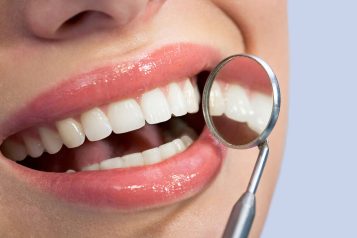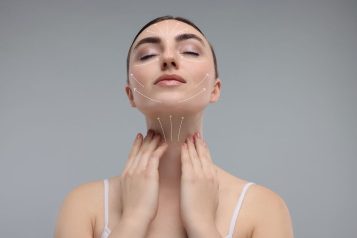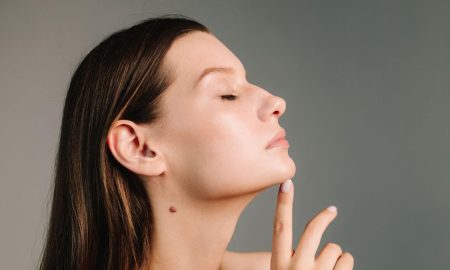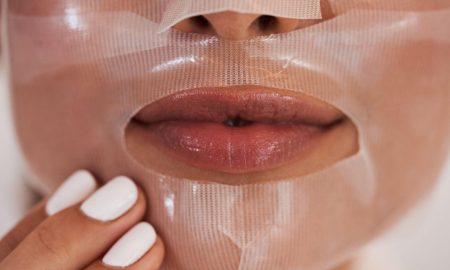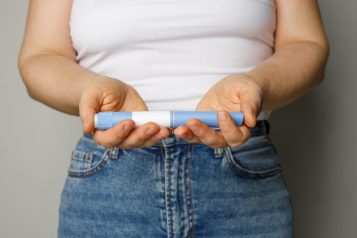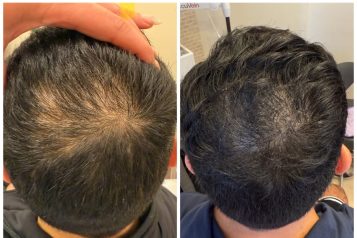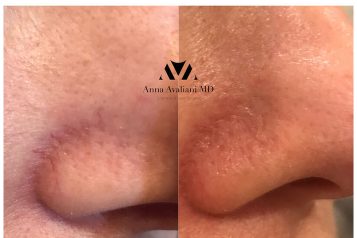 Photo Credit: Shutterstock
Photo Credit: Shutterstock
Jade Smith, Noelle Garbaccio, Samuel Lin, MD, FACS
“Ozempic Butt” refers to the overall deflation of the buttocks that can occur following the use of injectable weight loss medications. The appearance of loose, sagging skin results from rapid weight loss, and it is a hot topic of discussion among plastic surgeons.
The sagging of skin is primarily due to loss of collagen and elasticity. Collagen is a structural protein that contributes to firmness of the skin. Elasticity describes the skin’s ability to stretch and snap back to its original shape, like a rubber band. If the skin is stretched out for a long time, it loses its ability to shrink to a new body size after rapid weight loss. Think of a balloon that’s losing air: as the balloon deflates, you notice wrinkles and extra “balloon” material where the air once filled. With rapid weight loss, the depletion of body fat similarly outpaces the shrinking of the skin, leaving behind excess folds.
Ozempic is understood to cause weight loss by increasing satiety—users feel full faster. Eating less food increases fat breakdown, effectively harvesting energy stored in the fat that would otherwise come from meals. The breakdown of fat decreases body volume, deflating the metaphorical balloon and causing the skin to sag. Sagging is, therefore, most prominent in parts of the body with the highest fat content, namely the breasts, buttocks, and facial cheeks. As the fattiest regions, the trunk and extremities experience the most dramatic loss of body fat, leading to breast deflation and buttocks flattening. Facial changes are more subtle but can feel significant. In the face, massive weight loss mimics the aging process. The temples of the forehead hallow, the cheeks deflate and fall, the jaw loses definition, and the lips thin. Again, this is caused both by fat breakdown and loss of skin elasticity.
While skin sagging is commonly reported, it does not occur in everyone. The exact frequency is unknown, and the risk depends on the individual. Age plays a significant role, as our skin naturally loses collagen and elasticity over time, making it more prone to sagging. Nutritional deficiencies can also result in poor collagen production and increase sagging risk. These skin changes are not unique to injectable weight loss medications—anything that causes massive weight loss may have these effects.
It is important to note the effects of Ozempic on satiety can lead to malnutrition and eventual loss of muscle mass. Protein consumption is essential to maintaining lean muscle. If the Ozempic user’s diet is not optimized to prioritize protein, the body will catabolize existing muscle to “harvest” protein, in the same way, one might derive energy from fat. Loss of muscle mass may manifest as reduced muscle strength, exacerbated facial gauntness, and morphological wasting. This is not an intended or expected effect of Ozempic. Should this occur, the user’s diet should be meticulously scrutinized to restore nutritional homeostasis.
Skin sagging is not naturally reversible. However, the plastic surgery community is committed to providing advice and interventions to restore body image and symmetry after massive weight loss. There are several ways to combat “Ozempic Butt” and overall loose skin, ranging from lifestyle modifications to surgical interventions:
- Lose weight slowly: Following an extended weight loss plan for more gradual weight loss allows the skin more time to adapt and reduces sagging.
- Find a nutritionist: High-protein, normal-calorie diets preserve lean muscle mass and fill out loose skin.
- Get injectable fillers: Polycaprolactone-based dermal fillers act as short-term solutions to restore volume in the face and simultaneously stimulate collagen synthesis for long-lasting effects.
- Consider surgery: Body contouring surgery can reduce redundant skin and enhance the shape of the buttocks. This procedure is typically recommended once the weight has stabilized to ensure lasting results. To address facial changes, a face or lip lift can be considered.
- Bonus tip: There is no strong evidence to support doing targeted butt workouts, but exercise is always encouraged in pursuit of a healthy lifestyle!
References
- Wirth, P. J., Shaffrey, E. C., Bay, C., & Rao, V. K. (2024). Current Weight Loss Medications: What Plastic Surgeons Should Know. Aesthetic Surgery Journal, 44(2), NP177-NP183.
- O’Neill, E. S., Wiegmann, A. L., Parrella, N., Pittman, T., Hood, K., & Kurlander, D. (2024). Injectable weight loss medications in plastic surgery: what we know, perioperative considerations, and recommendations for the future. Plastic and Reconstructive Surgery–Global Open, 12(1), e5516.
- Couto, R. A., Charafeddine, A. H., & Zins, J. E. (2019). Facelift in Patients with Massive Weight Loss. Clinics in plastic surgery, 46(4), 559–571. https://doi.org/10.1016/j.cps.2019.05.003
- Giordano, S., Victorzon, M., Koskivuo, I., & Suominen, E. (2013). Physical discomfort due to redundant skin in post-bariatric surgery patients. Journal of Plastic, Reconstructive & Aesthetic Surgery, 66(7), 950-955.
- Trovato, F. M., Imbesi, R., Conway, N., & Castrogiovanni, P. (2016). Morphological and functional aspects of human skeletal muscle. Journal of Functional Morphology and Kinesiology, 1(3), 289-302.
- Humphrey, C. D., & Lawrence, A. C. (2023). Implications of ozempic and other semaglutide medications for facial plastic surgeons. Facial Plastic Surgery, 39(06), 719-721.
- López-Gómez, J. J., Ramos-Bachiller, B., Primo-Martín, D., Calleja-Fernández, A., Izaola-Jauregui, O., Jiménez-Sahagún, R., González-Gutiérrez, J., López Andrés, E., Pinto-Fuentes, P., Pacheco-Sánchez, D., & De Luis-Román, D. A. (2023). Effect on Body Composition of a Meal-Replacement Progression Diet in Patients 1 Month after Bariatric Surgery. Nutrients, 16(1), 106-. https://doi.org/10.3390/nu16010106
- Leidy, H. J., Clifton, P. M., Astrup, A., Wycherley, T. P., Westerterp-Plantenga, M. S., Luscombe-Marsh, N. D., Woods, S. C., & Mattes, R. D. (2015). Role of protein in weight loss and maintenance. The American Journal of Clinical Nutrition, 101(6), 1320S-1329S. https://doi.org/10.3945/ajcn.114.084038
- Kim, J. A., & Van Abel, D. (2015). Neocollagenesis in human tissue injected with a polycaprolactone-based dermal filler. Journal of Cosmetic and Laser Therapy, 17(2), 99-101.
For more information, visit Dr. Samuel Lin's social media:






